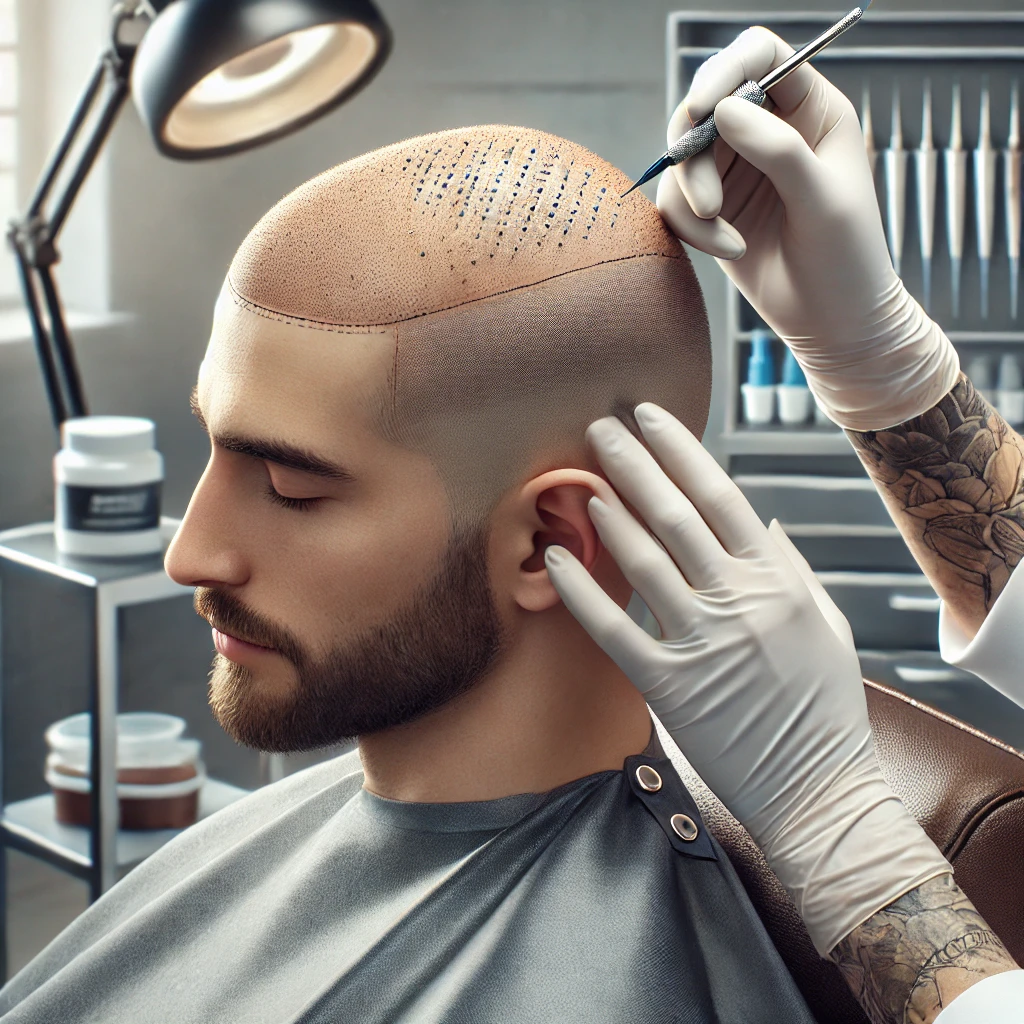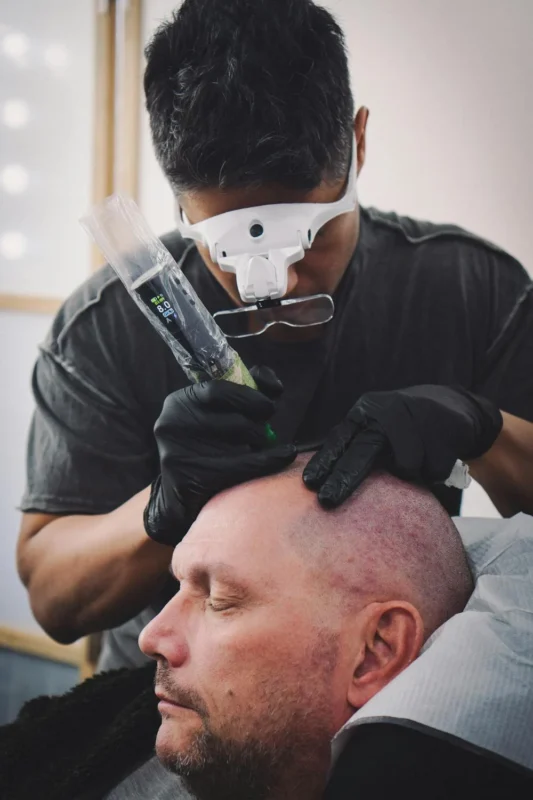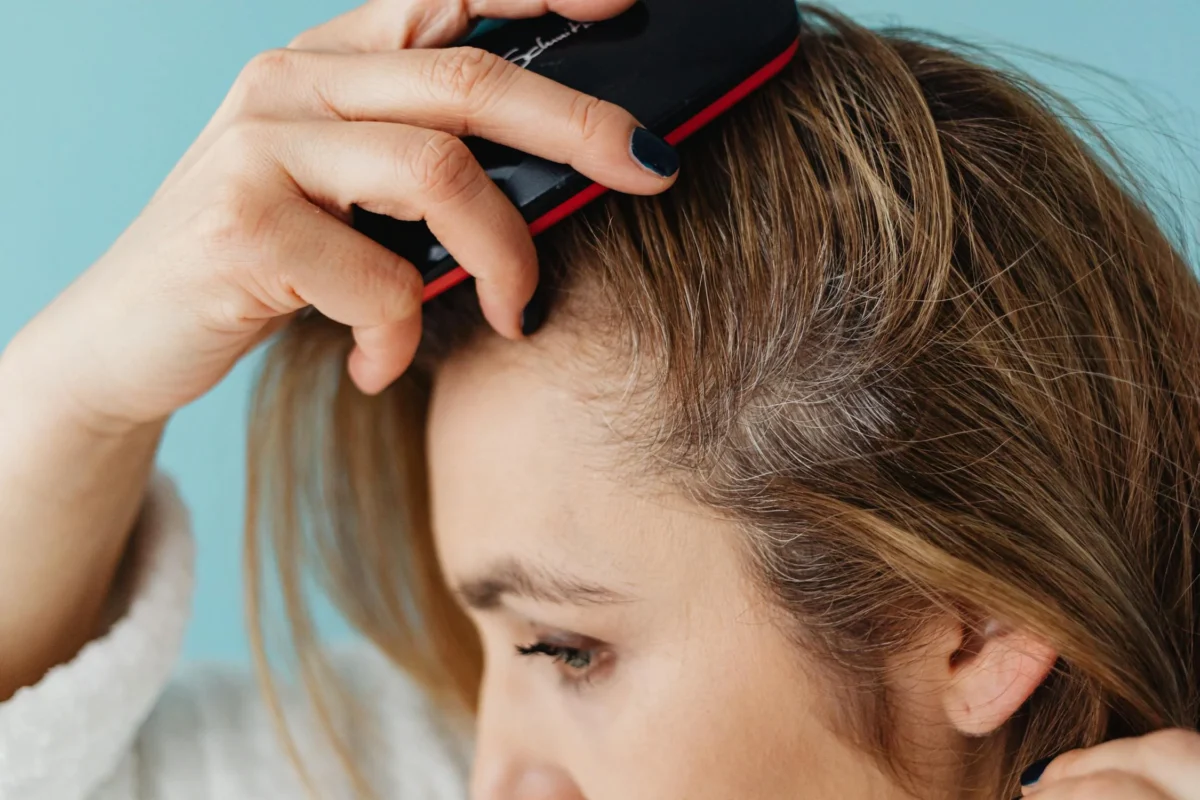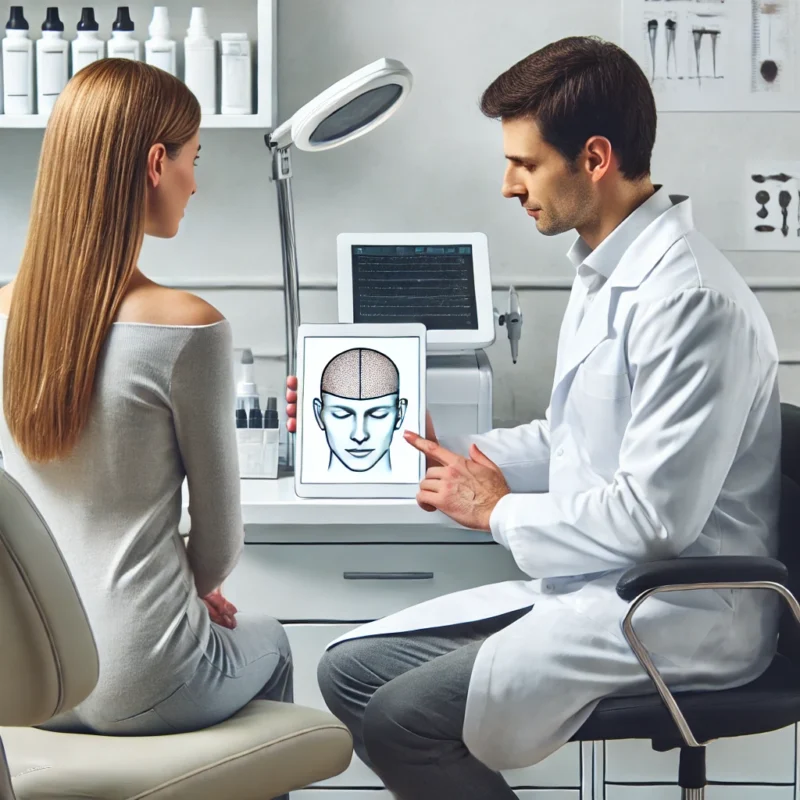How Effective Is Scalp Micropigmentation Treatment? Guides

Scalp micropigmentation (SMP) offers hair loss solutions for people dealing with conditions like thinning or bald patches. The treatment applies detailed pigments to the scalp, mimicking hair follicles. This procedure aims to recreate your prior hair thickness or rebuild missing density. Here are some ways micropigmentation treatment is effective:
What Is Scalp Micropigmentation?
Scalp micropigmentation (SMP) is a non-surgical procedure where a skilled provider uses a fine needle to deposit tiny pigment dots onto the scalp. These dots vary in size and depth to create the illusion of thicker hair. This technique is used to:

- Conceal thinning areas on the scalp
- Cover birthmarks or scars
- Create a buzz-cut appearance for those who are bald
How Does Scalp Micropigmentation Help with Hair Loss?

SMP is a long-lasting solution to mask hair thinning and baldness. Since it is non-invasive and does not require surgery or anesthesia, you can resume your daily activities almost immediately. The procedure has minimal side effects, with slight redness that usually subsides within a few hours.
| Feature | Scalp Micropigmentation | Hair Transplant Surgery |
|---|---|---|
| Invasiveness | Non-invasive | Surgical (requires incisions) |
| Pain Level | Minimal discomfort | Moderate to high pain |
| Cost | More affordable | Expensive |
| Recovery Time | No downtime | Several weeks |
| Results | Instant appearance of fuller hair | Takes months to see growth |
Faster Recovery Time
Micropigmentation treatments cause minimal discomfort and typically have quick recovery compared to invasive hair restoration, which may involve linear scalp cuts or follicular unit extraction. Those procedures might require grafting hundreds of individual hairs. For SMP procedures, a topical anesthetic numbs the scalp for a more comfortable experience before the procedure. Clients often heal in a few days with little or no downtime post-session. The treatment offers a permanent hair loss solution at an affordable rate. You might also avoid the recurring expenses of hair fibers, topical root concealers, and wigs that need ongoing replacement.
Higher Success Rate and Long-Lasting Results
SMP treatments achieve consistent results when performed by experienced technicians. Practitioners use tested devices and proven techniques to apply pigments with precision. Their application replicates natural hair patterns to cover up conspicuous bald areas. The inks they choose for small dots are designed to remain true to the patient’s intended hair color. Many recipients of SMP report a sense of satisfaction with the new overall appearance of fuller hair.
Scalp micropigmentation offers a hair restoration solution with results that last years. Unlike the fading hue of topical concealers or the temporary impact of hair fibers, micropigmentation’s pigments resist each hair-washing session. Regular maintenance optimizes results, but the pigments won’t diminish like other solutions. Micropigmentation bonds fused pigments with your dermis for a natural follicle look. The detailed pigments provide more realistic effects than topical products or hairpieces. Once completed, your micropigment restoration remains intact instead of requiring frequent reapplications to disguise hair loss areas.
Scalp micropigmentation bypasses the prolonged recovery period and swelling associated with hair transplant surgery.
Most procedures can be completed in three to four sessions, lasting a few hours each.
Slight redness or tenderness on the scalp often subsides within a couple of days post-treatment.
Patients can often resume daily activities soon after each appointment.
Common Causes of Hair Loss
Hair loss can be progressive and is influenced by various factors, including genetics, medical conditions, and treatments. Here are some common causes:
| Condition | Description |
| Alopecia Areata | An autoimmune disorder where the body attacks hair follicles, leading to unpredictable hair loss. Some experience regrowth, while others have permanent hair loss. |
| Chemotherapy-Related Hair Loss | Chemotherapy targets rapidly dividing cells, including hair roots. Hair loss may be temporary, depending on the type of chemotherapy used. |
| Female Pattern Hair Loss | Over 50% of women experience hair thinning, often due to genetics, hormonal changes, or menopause. |
| Male Pattern Hair Loss | The most common type of hair loss in men, characterized by thinning hair, bald patches, or a receding hairline. |
| Scars or Birthmarks | Visible scars or birthmarks on the scalp can make hair look sparse. SMP can help camouflage these marks. |
What to Consider Before Getting Scalp Micropigmentation

While SMP does not stimulate hair growth or alter natural hair growth patterns, it does not contribute to further hair loss or damage existing follicles. However, before undergoing the procedure, consider the following:
- Choose a qualified provider to ensure natural-looking results and reduce risks.
- Understand that multiple sessions (usually 2-3) may be needed for optimal results.
- Each session can take up to five hours depending on the treatment area.
What to Expect Before and During Scalp Micropigmentation
Before your procedure:
- Wash your hair and scalp.
- Your provider will mark the areas to be treated.
- If you are completely bald, the provider will design a suitable hairline based on your facial structure and age.
- Together, you and your provider will select a pigment that matches your natural hair color.
- A numbing agent will be applied to minimize discomfort.
During the procedure:
- A fine needle will be used to apply pigment dots to your scalp.
- Since SMP needles are smaller than traditional tattoo needles, the process is less painful.
- Each session can take up to five hours.
- Multiple sessions help create a fuller and more natural look.
Aftercare and Recovery
While there is no significant downtime, you should take certain precautions for a few days:
- Avoid getting your scalp wet (wear a shower cap while bathing and avoid washing your hair until advised).
- Refrain from strenuous activities that cause excessive sweating.
- Stay away from hot environments like saunas or steam rooms.
- Minimize sun exposure to protect the treated area.
Is Scalp Micropigmentation Safe?
While SMP is generally safe, some risks are associated with inexperienced providers. These include:
- Allergic reactions to the pigment
- An unnatural appearance due to poor technique
- Infection from improperly sanitized needles
To minimize risks: ✔ Choose a licensed and experienced SMP provider.
✔ Review before-and-after photos of their work.
✔ Inform your provider of any allergies.
✔ Avoid the procedure if you are prone to keloid scarring.
Safe and Comfortable Experience
Licensed micropigmentation technicians have the certification and training to perform treatments safely in a hygienic medical office or spa setting. They wear gloves and protection to prevent cross-exposure between clients while making each visit low-risk. Micropigmentation offers accurate hair restoration that is carried out with the utmost care. The specialist’s extensive skills lead to natural results, and they provide clients with comfortable recovery.
Schedule a Scalp Micropigmentation Consultation Today

Scalp micropigmentation provides safe and effective looks for thinning hair or bald spots through precise pigment placement. Technicians employ standardized methods with hues that match your hair color and impact skin. You can get results that peer salons and hair restoration experts will approve. Reach out to a micropigmentation team today to start your hair restoration journey.

